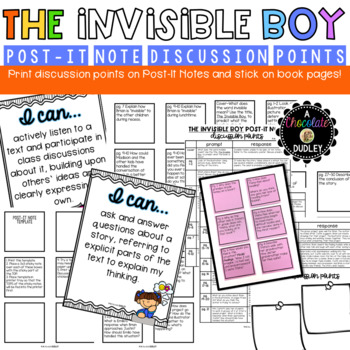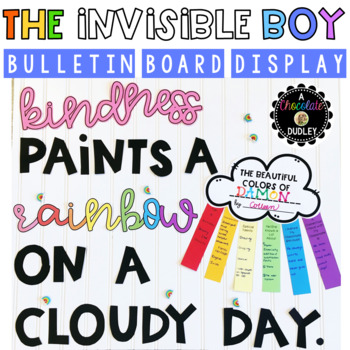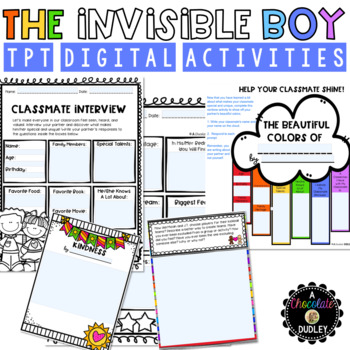The Invisible Boy Activities
- PDF
- Easel Activity
What educators are saying
Description
The Invisible Boy Interactive Read Aloud Lessons is the perfect companion to The Invisible Boy by Trudy Ludwig, an absolute must-read during the first couple weeks of school. It contains Vocabulary and Learning Objective Posters, as well as Discussion Points that can be printed on Post-Its and stuck inside the book. Kiddos will enjoy interviewing a classmate, learning about their unique qualities, and creating a rainbow for them to show off how special they are.
This writing activity is available for PRINT and digitally via TpT's Digital Activities tool.
DISTANCE LEARNING:
To use The Invisible Boy Interactive Read Aloud Lessons digitally, click the red "Create Digital Activity" button after downloading the resource. You will notice the digital overlay already includes some brief instructions and text boxes students may type into. You will have the ability to customize this digital layer to your liking and then share the activity to your students on GOOGLE CLASSROOM.
Book Summary:
Trudy Ludwig teaches us about kindness and compassion by telling Brian's story in The Invisible Boy. Brian feels invisible to his classmates at school and isn’t even noticed by his teacher, Mrs. Carlotti. He’s not picked for either kickball team at recess, is the only kid at the lunch table who isn’t a part of the conversation, and wasn’t invited to Madison’s birthday party. Despite all of this, Brian is the first to reach out to the new boy, Justin. When Justin acknowledges Brian and compliments his chalk drawing, Brian begins to feel seen. Justin encourages Brian to work on a special group project with him and Emilio. The three boys work together and Brian flourishes. Although the text is simple, it reaches such emotional depths.
The Invisible Boy Interactive Reading Lessons Include:
- Book Overview
- Common Core State Standards chart showing the standards the lessons are aligned to
- Objective Posters written in student-friendly language (Print & Digital)
- Vocabulary Posters (Print & Digital)
- Discussion Points that can be printed on Post-it notes and Answer Key
- Classmate Interview: Students discover a classmate's unique qualities, so everyone feels "seen" and "heard". (Print & Digital)
- Classmate Rainbow Project: Students create a rainbow representing the colors of their classmate and how special they are. (Print & Digital)
- Letters for Bulletin Board Display ("Kindness paints a rainbow on a cloudy day.")
- Journal Writing Prompts (Print & Digital)
- Writing Prompt with Final Draft Paper (Print & Digital)






